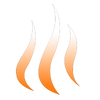Sports Bras can be so frustrating! 😩 But here's some good tips...
Posted by KASSY RAWLS

Do you have a drawer full of sports bras that look good but don’t support or vice-versa? So did I. As a 6-days per week gym-rat, I get how important it is to find sports bras you love. But with scores of different options, many of them more fashionable than functional, sports bra shopping can become a marathon of its own. So, I thought I’d chime in on the subject.
Why you need a good sports bra
Your breasts’ natural support system consists mainly of connective tissue, called Cooper’s ligaments, as well as skin. While they’re good enough against gravity alone, physical activity can put a lot of strain on these tissues, causing uncomfortable bouncing (3 to 5 inches in any direction, depending on breast size) that may lead to premature sagging as well as back and neck pain. A good sports bra can reduce bouncing by up to 50% and exponentially increase comfort.
If you are augmented, your need for support is augmented too. Even though implants can give you a beautiful breast shape sans bra, you need a sports bra that will keep the added weight of your implants from stressing (and prematurely stretching) your breast tissue and skin.

Steps for Success
A lot of women figure that sports bras are stretchy and fit a range of women, so hopping online to order something that looks good will do the trick. Don’t! If you want a great fit and support, go to an expertly trained bra fitter, like Yve.
As she’ll tell you, guessing about fit online, or even the chain store sales associate with a tape measure won’t cut it. Bra fitting involves more than matching your bust and chest circumference to a cup size. Your height, rib cage contours, shoulder width, and even the firmness of your breasts matter.
“There are so many details that go into a bra and how it is going to fit. My goal is ensuring every client walks out with a bra that fits perfectly. I want you to make an investment and go home with something you feel great about…I don’t just fit you and send you on your way. I explain why I chose that bra, how it works for your body. By the end of a fitting, I know without a shadow of a doubt that the bra you buy fits.” —Yve
Here’s how a sports bra should fit:
- The band fits securely without constricting your breathing. If you can’t get two fingers’ width beneath the band when the bra’s on, or you can’t take a deep breath comfortably, it’s too tight. If it slides up when you lift your arms, it’s too loose.
- The band is doing most of the work. Yve says that “women tend to gravitate toward sports bras that ‘smash’ the breasts closer to the body,” mistakenly thinking that this provides support; however, 90% of the support should come from the band and the cups. If the straps are digging into your shoulders, the bra doesn’t fit. Well-fitting straps will give a little to allow for full shoulder and arm range of motion, but will not bunch up or slide around when you move.
- Your breasts stay on their own side. Your breasts shouldn’t spill over the sides or the top. Each breast should be fully encapsulated by its side of the bra, but you shouldn’t see any wrinkling or extra space—this indicates that the bra is too big.
- The bra fits when it’s adjusted to the not-tightest setting. All bras will stretch out with use. If your bra has adjustable straps or a hook & eye closure, it should fit snugly but still have room to be tightened up in the future so it does not quickly become too loose.
- Nothing pokes, prods, or rubs you the wrong way. If you try on a bra and it just doesn’t feel right, despite meeting other bra fit requirements, move on. Jog around in the bra, jump up and down, do a downward dog—“Test it out by doing what you do,” as Yve says. Anything that feels uncomfortable now is likely to morph into serious chafing later.
“When shopping for your next sports bra, find something that lifts the breasts and keeps them in place while allowing movement. Firm but flexible, so your breasts move with your body.”—Yve

Now let’s talk bells & whistles
Sports bras boast a variety of features, some of them useful, some are just for show. Here’s what you need to know:
- Wires vs. wireless. Sports bras with underwires tend to work better for women with firmer or augmented breasts. A wireless bra will better contain and feel more comfortable for breasts that are sagging or have looser tissue.
- Racerback vs. scoop back. Racerbacks (a.k.a “T-back”) bras allow the shoulder blades optimal range of motion, but they lack the back support necessary for larger or heavier breasts, placing too much pressure on the shoulders. Scoop back bras are more supportive. Many bras offer a removable “J hook” that allows you to clasp the straps together in the back for a happy medium.
- Adjustable straps. Every woman’s breasts are a unique distance from her shoulders, and adjustable straps allow you to customize your fit.
- Panels. The panels—the sections of fabric in the top and sides of the bra cup—hold the breast in place without smashing them. The more well-constructed the panels are, the more supportive the bra will be during high impact activity.
It’s important to treat yourself
Whatever sports bra you choose, it’s an investment in yourself—and feeling great and looking fabulous is priceless. As Yve says, “it’s about living a better lifestyle, feeling confident and comfortable.” More sports bra questions? We’d love to hear them. Leave a comment below to get more great body and beauty advice.

TAGS:




